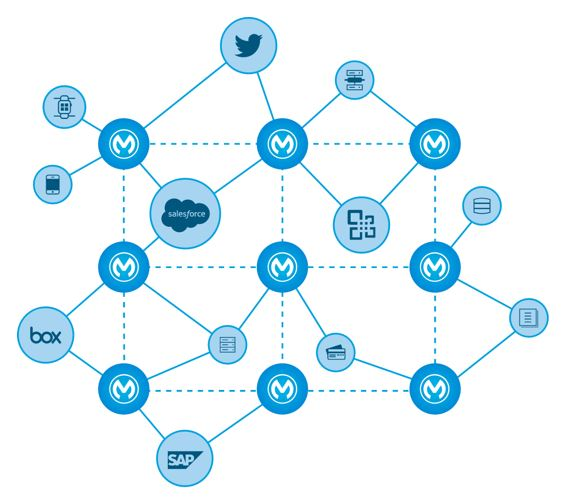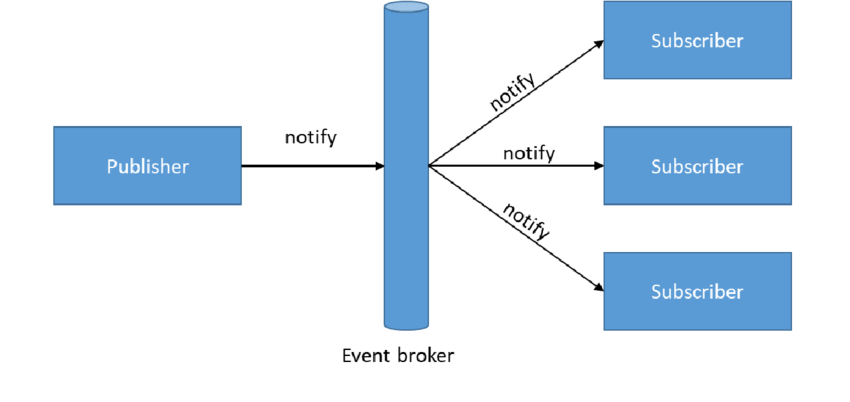As any data manager knows, the influx of available data isn’t always necessary for business needs. That’s why event-driven architecture (EDA) is useful to help filter data that meets certain criteria, reducing the load on integration systems. EDA enables different systems to work with different data through loose coupling between microservices.
EDA creates flexibility for developers with loose coupling and the ability to broadcast. This is because changes to a system can be made within the application network without affecting downstream systems. A new system can process an event and pass it along to the older systems in the same way as before any system changes were made, thereby allowing communication methods such as broadcasting.
EDA mainly consists of microservices and real-time integrations. A given event triggers and interacts with different microservices or end systems. In EDA, all the ACID properties (Atomicity, Consistency, Isolation, and Durability) are followed. Conveniently, ACID properties are also followed by monolithic architecture for transaction management.
In this blog post, I’ll discuss three benefits of event-driven architecture and will be comparing the strengths of these benefits with traditional monolithic architecture.
#1. Loose coupling
Monolithic architecture is tightly coupled and isn’t capable of scaling or granularity. If there are any issues or errors with monolithic architecture, the entire application will fail and the resolution time will be high. The emergence of microservices solves for the gaps of a monolithic architecture because microservices support loose coupling, scalability, and granularity.
Since event-driven architecture and microservices go hand-in-hand, we can derive the benefits of using microservice architecture via an API-led connectivity approach. Since microservices are isolated from one another, any modifications or enhancements can scale easily and we can add new functionalities to form a mesh or an application network.

Loose coupling has three unique advantages: scalability, consistency, and fault tolerance.
- Scalability: If there is a heavy data load or a high volume of traffic, we can easily scale our services with loose coupling. We can also update our applications to add or adjust functionalities.
- Consistency: EDA has microservices that are in silos, but it’s expected that the data across all systems should be consistent. It’s difficult to achieve this using the traditional monolith architecture, but it’s more manageable with EDA.
- In EDA, the single point of contact is the message broker. All of the messages are stored in the queue thus enabling consistency across the end systems. Different microservices respond to an event via a message broker. As the message broker is the hub of EDA, it makes sure that all events across systems are consistent and the information is well-communicated.

- Fault tolerance: Messages reside in queues, allowing consumer services to consume these messages from a single source. If there is downtime, the messages will be stored in a queue and will be processed once the consumer service is back up, ensuring there is no loss of data.
#2. Resilience
Event-driven architecture enables increased resilience because it reduces dependencies between applications. If a particular service fails, it can autonomously restart, recover events, and replay them if needed. For instance, if an application experiences heavy traffic, we can store the excess requests in the queue so that no data will be lost.
In a clustered environment, if an event is not acknowledged by an application due to unavailability or downtime, it will be available for other servers to process so the event doesn’t get lost.

#3. Broadcasting
Broadcasting is at the core of event-driven architecture and is the process where messages can be published to multiple end systems at the same time allowing the application to be in sync.

Broadcasting is consistent across multiple systems and enables the broadcasted event to work as a single source of truth. And, while all applications in EDA are isolated from each other, they still achieve consistency. Broadcasting helps with real-time data processing by expediting decision-making processes for businesses and by providing end systems messages without polling.
Getting started with event-driven architectures on Anypoint Platform
Ready to start accelerating your event-driven journey? Explore the new capability to design and catalog AsyncAPI specifications on Anypoint Platform by signing up for a free trial. You can also download Anypoint Studio or learn more about the release in our documentation.









